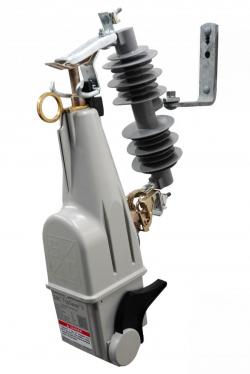Lake Region Electric Cooperative is a 24,000-meter utility located in Hulbert, Oklahoma. Like many rural cooperatives, it has numerous lines that have hydraulic reclosers installed for feeder protection and sectionalizing. Its base of hundreds of installed reclosers required maintenance, typically on a six-year cycle. Once hydraulic reclosers were in the shop, their repair costs varied widely based on the duty and physical requirements of the returned units, but the utility typically paid an average $600 per unit. When the repair requirements were extensive, it opted to buy refurbished units costing up to $3,000. Once units were repaired or replaced, the cooperative returned them to its inventory and the cycle continued. A significant inventory of reclosers had to be maintained to cover the quantities removed each year for maintenance and to cover emergency replacements when units failed while in service.
Faced with these types of challenges, Lake Region Electric explored alternatives that could better accommodate device coordination, required less maintenance, and reduced inventory requirements. The utility evaluated several alternatives using microprocessor controls or live-tank designs with potentially high voltage. It found that electronic reclosers with controls generally needed monitoring and maintenance. Another option was an energized tank design, but that would require special operating procedures and training.
After hearing about S&C's TripSaver II Cutout-Mounted Recloser, Lake Region welcomed S&C to conduct a detailed technical review of the device. All aspects were thoroughly discussed regarding coordination, set up, installation, and operation. Because TripSaver II reclosers have a solid dielectric, with a self-powered configurable electronic control, the utility realized it would be an attractive alternative to hydraulic reclosers and their costly required maintenance cycles. The cooperative agreed to do a small TripSaver II recloser pilot to run firsthand through the total process: programming, installation, commissioning, and operation. S&C followed up, assisting with on-site training for operations crews and other stakeholders so everyone involved was comfortable and informed.
Results
Lake Region Electric Cooperative was so satisfied with the results of its pilot that it has begun to replace and upgrade its installed base of hydraulic reclosers with TripSaver II Cutout-Mounted Reclosers as existing units are retired or removed from service. In addition, it has begun to use the TripSaver II reclosers for all new recloser installations. The co-op's new crossarm configuration is also simplifying the updates and installations.
The price Lake Region is paying for the TripSaver II reclosers is about half that of new hydraulic units. Moreover, it found the TripSaver II units to be far more flexible to coordinate and operate. The biggest offsets to the investment toward new upgrades is the elimination of excess inventory necessary to perform scheduled annual maintenance to remove, replace, and repair approximately 150 devices per year, as well as the cost to maintain the in-service units. For Lake Region, this will translate to an average annual savings of at least $120,000 just in maintenance costs alone. Moreover, the cooperative gains added flexibility to accommodate current applications and future system changes it previously couldn't address with hydraulic units.










